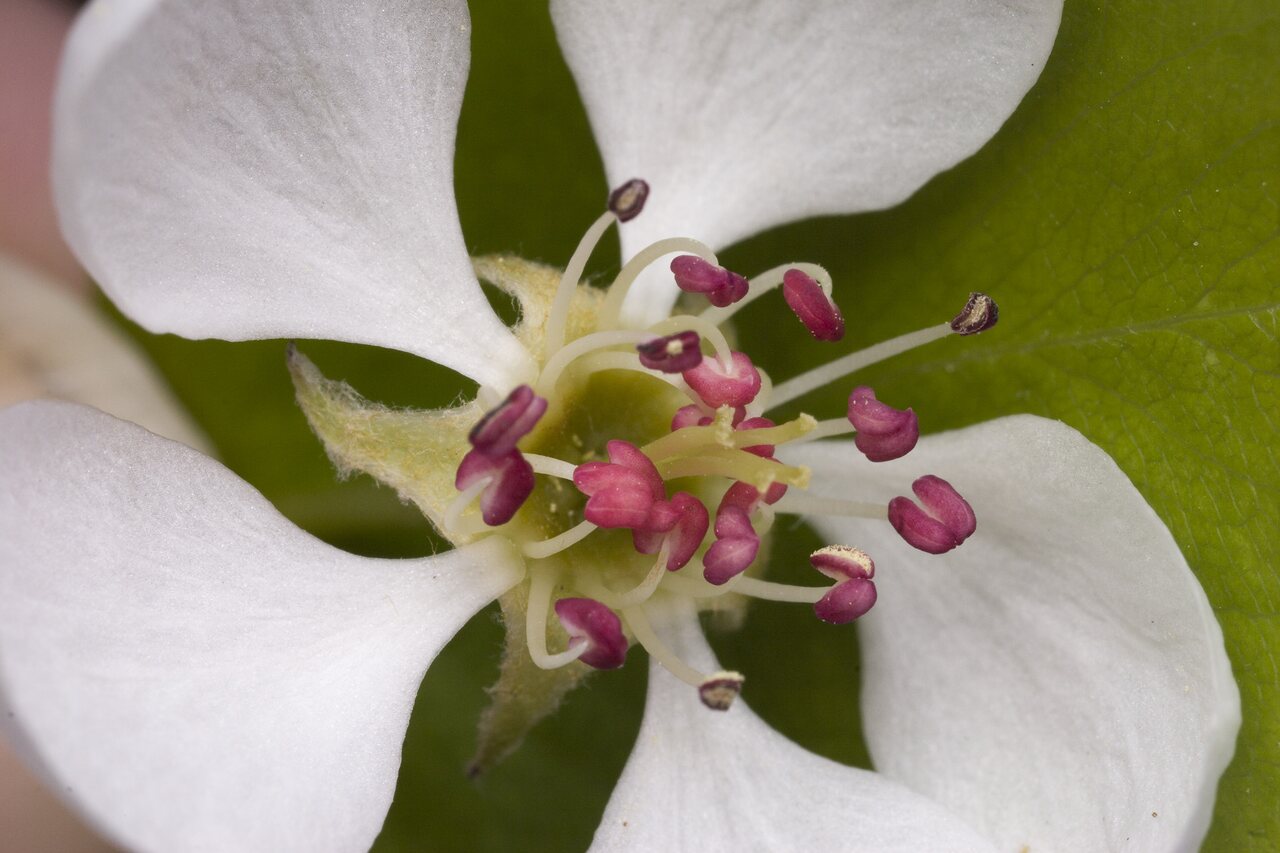
Pyrus pyraster · miškinė kriaušė
- Pyrus communis subsp. pyraster
- European wild pear
- Wildbirne, Holzbirne
- miškinė kriaušė
- meža bumbiere
- grusza polna
https://en.wikipedia.org/wiki/Pyrus_pyraster This wild pear and Pyrus caucasica (syn. P. communis subsp. caucasica) are thought to be the ancestors of the cultivated European pear (Pyrus communis subsp. communis). It is sometimes difficult to distinguish Pyrus pyraster from a common pear. Pyrus pyraster can reach an age of 100 to 150 years.
Unlike the cultivated form, the branches have thorns. The leaves are ovate with serrated margins. The flowers have white petals. The stamens are equal to the length of styles. The flowering period extends from April through May. The fruits reach 1–4 cm in diameter and ripen in late summer to early autumn. They are quite hard and astringent, but they have a sweet taste and are edible when they are very ripe and fall from the tree. The seeds ripen in September.
Miškinė kriaušė, tai pagrindinė rūšis, iš kurios dažniausiai kryžminant su kitomis kriaušių rūšimis, kilusi dabar soduose auginama naminė kriaušė (Pyrus domestica). 9967
0 comments
Add a comment